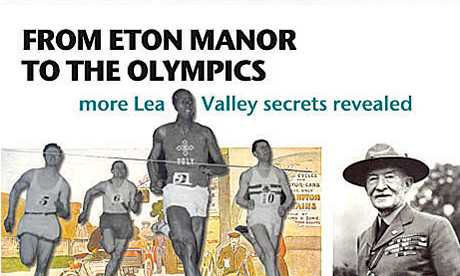Three Lea Valley histories – reviews

One in a series on the Lea Valley, by historian Jim Lewis
Idea for a game: cut sheets of paper into small pieces and write a random noun on each, then put the pieces into a hat and tell your guests to pick two each and find a connection between them. One might get, say, “Cheryl Cole” and “The Edmonton Incinerator”, another “Dental floss” and “Phytosemiotics”.
Intellectually speaking, everything is but a few short steps away from every other thing (each individual on Earth is said to be linked via six degrees or less of separation to any other random individual), so a connection can always be unearthed.
The winner is whoever can find the least tenuous link between their two subjects.
Jim Lewis would probably be good at this game. In this illustrated series of books he seems to be picking out nouns from the hat constantly – albeit with “The Lea Valley” always in his other hand.
Apparently obscure topics he explores include “the Lea Valley and the founding of Meteorology” and “the Lea Valley and the State of Israel”.
Barometric pressures noted-down in Tottenham by a landowner in the early 1800s formed the basis of modern weather forecasting, he explains.
East London’s links with the Jewish State, meanwhile, began when Chaim Weizmann, the talented biochemist who went on to become Israel’s first president, set up a lab in Three Mills, Bromley-by-Bow.
Then there is computing, the dying process, broadcasting, aeronautics. The list is endless, as if all modern technology were rooted in the Lea’s marshy banks.
Carved in the ice age (around 1,000,000 years ago), the River Lea and its valley flow from Ware in Hertfordshire to Leamouth at the Thames. Lewis considers this area as a whole, but our borough gets a few noteworthy shout-outs.
Wick, for example, was apparently the birthplace of plastic. During the Crimean War, the Xylotine Factory in Wallis Road produced a forerunner to the packaging which now, unfortunately, sheathes so much supermarket produce (speaking of supermarkets, we learn that Tesco founder Jack Cohen first hawked his wares in Well Street Market, near Victoria Park, and then in Upper Clapton Road in the inter-war years).
Alfred Hitchcock, meanwhile, was starting his career as a title card designer in the 1920s at the confusingly named Islington Studios – a film studio based in Hackney. Lewis summarises the history of the film industry which grew up in nearby Walthamstow, helped in his task by photographs from the time, which are published alongside his text.
Perhaps most interesting are the author’s descriptions of the valley in ancient times.
Artefacts found in the region include a late Saxon log boat (unearthed in Clapton) as well as Neolithic tools and Bronze Age jewellery. After the fall of the Roman Empire, great battles were fought in the valley between Saxons and Danes.
Lewis writes: “Today’s casual visitor to the Lee Valley Regional Park would probably find it difficult to imagine the events that took place in this relatively small area of land adjacent to the capital that helped shape a future British nation. It might also be hard to imagine…that the east bank of the River Lea was once Danish territory while the west bank was Saxon.”
It is a comfort to think of these chthonic remnants – art, skulls, money and weapons – and a reminder that, however different the ancient world was from our world, the two are linked somehow, as if by a winding river.
This comprehensive series, which also includes two other titles (Gunpowder to Guns and Battleships, Buses and Bombers) is a good starting point for anyone wishing to learn more about the region’s history in the run up to the Olympic Games, when the world’s attention will be focussed on this fascinating neck of the woods.
The Lea Valley series by Jim Lewis is published by Libri Publishing.
